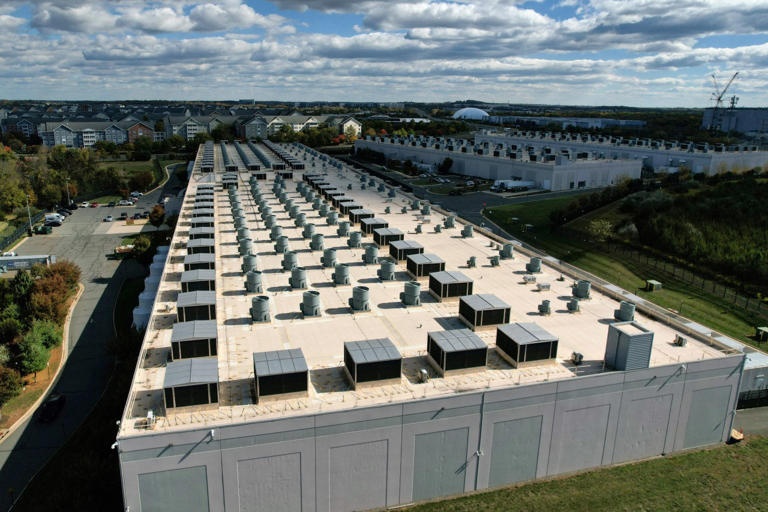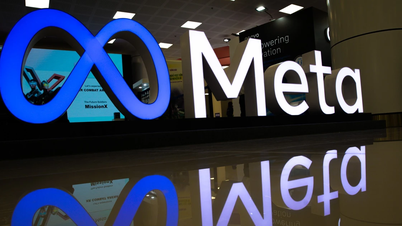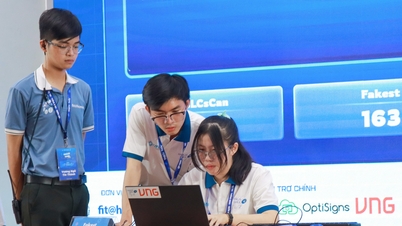
Faced with the enormous energy demands of AI, tech giants like Jeff Bezos and Elon Musk are seriously discussing the construction of large-scale data centers in space, arguing that this is the only sustainable way to operate extremely energy-consuming systems.
These ambitious announcements come as Jeff Bezos' Blue Origin and Elon Musk's SpaceX are pushing to reduce the cost and increase the frequency of space travel. The convergence of the space race and the AI wave is ushering in a new era of investment, although many experts have expressed concerns about the risk of an "AI bubble."
Energy pressure
AI’s energy demands are outstripping the Earth’s current power grid, with the US government warning of the need for massive new capacity. In fact, AI companies are having to find temporary power sources.
Elon Musk's XAI is using gas turbines. Meanwhile, OpenAI is forging partnerships with governments to add a whopping 100 gigawatts of capacity per year.
To put that in perspective, 100 gigawatts is an energy requirement that far exceeds the imagination of previous generations. In the movie Back to the Future , the 1.21 gigawatts needed for time travel was considered an unimaginable amount of power, equivalent to a lightning bolt. Now, 1 gigawatt seems too small compared to the expected needs of the AI industry.
 |
Amazon's data center in Ashburn, Virginia, US. Photo: Jonathan Ernst/Reuters. |
The ultimate solution, according to tech giants, is to offload computing to space, where solar energy can be harvested more efficiently. Space offers several key advantages for hosting data centers.
First, solar panels in orbit or on the Moon can capture direct, continuous sunlight, eliminating any interruptions due to weather. Second, the vacuum of space allows for a significantly reduced need for cooling. Finally, operators can avoid the regulatory hurdles and public opposition that often slow down the construction of infrastructure on Earth.
While the economics of space data centers aren't quite there yet, an analysis by Phil Metzger, a research professor and former NASA scientist, predicts they could become affordable in about a decade.
“I think AI servers in space are the first real business case that will lead to many others,” said Mr. Metzger.
Billionaire Jeff Bezos also expressed great confidence. “The Moon is a gift from space. It will be cheaper to build data centers in space than on Earth in a few decades. Space will ultimately be one of the places that makes Earth better,” he declared at a technology conference.
The plan has been implemented.
Tech companies have embarked on groundbreaking projects.
Alphabet, Google’s parent company, announced Project Suncatcher , an initiative to scale machine learning in space. Alphabet plans to launch two experimental satellites in early 2027 to test the hardware in orbit. “Like any moonshot project, it will require us to solve a lot of complex technical challenges,” CEO Sundar Pichai said.
Nvidia also recently partnered with startup Starcloud to research space data center solutions.
 |
A new AI data center under the Stargate project by OpenAI, Oracle, and SoftBank is being built in Abilene, Texas, USA. Photo: OpenAI. |
Meanwhile, billionaire Elon Musk is focusing on leveraging his space assets for AI energy needs. He is developing new versions of Starlink satellites that run on solar power and are equipped with high-speed lasers to build data centers in space.
Mr Musk recently revealed plans to have these AI satellites generate 100 gigawatts of solar power annually – equivalent to about a quarter of the average US annual consumption. He asserted the extraordinary scale of the idea: “It’s insane.”
The SpaceX CEO has even floated an even bolder idea: establishing a base on the Moon capable of manufacturing solar-powered AI satellites on site and launching them into orbit using a mass launcher, aiming to generate 100 terawatts of electricity per year.
Source: https://znews.vn/tham-vong-xay-dung-trung-tam-du-lieu-ai-ngoai-vu-tru-post1603475.html




























![[Photo] General Secretary To Lam and National Assembly Chairman Tran Thanh Man attend the 80th Anniversary of the Traditional Day of the Vietnamese Inspection Sector](https://vphoto.vietnam.vn/thumb/1200x675/vietnam/resource/IMAGE/2025/11/17/1763356362984_a2-bnd-7940-3561-jpg.webp)









































































Comment (0)